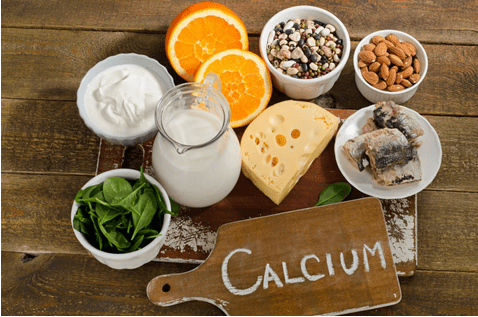
About soybeans
Soybeans are members of the pea (legume) family of vegetables and have been a staple of Asian cuisines for thousands of years.
Soy and soy foods are popular especially for people following vegetarian and vegan diets. This is due to their high-quality (‘complete’) protein content, and their ability to be processed into milk and meat substitutes.
Soybeans contain hormone-like substances called phytoestrogens that mimic the action of the hormone oestrogen and have been associated with beneficial health effects. Eating soybean-based foods may reduce the risk of various health problems, including cardiovascular disease, stroke, coronary heart disease (CHD), some cancers and improve bone health.
Evidence also suggests the consumption of soy and soy foods is beneficial for peri-menopausal and postmenopausal women and is linked to fewer and reduced severity of hot flushes.
More research is needed, but the evidence so far suggests that it is wise to include whole soy (or soy) foods in your daily diet. See your doctor or dietitian for further guidance.
Nutrition profile of soybeans
Soy is a high-quality protein. It is one of the few known plant foods (the other is amaranth seed and to a lesser degree, quinoa) to contain all the essential amino acids, like those found in meat.
The soybean is:
- high in fibre
- high in protein
- low in saturated fat
- cholesterol free
- lactose free
- a good source of omega-3 fatty acids
- a source of antioxidants
- high in phytoestrogens.
Soy products
Soybeans can be consumed in many ways.
Foods made from soybeans can be divided into unfermented and fermented foods. Unfermented foods include – tofu, soymilk, edamame, soy nuts and sprouts, while fermented soy products include – miso, tempeh, natto and soy sauce.
Some soy products are sources of calcium and iron – such as tofu or tempeh (made with a calcium coagulant) and calcium-fortified soy drinks.
‘Second generation’ soy products
Another class of soy-based food exists called ‘second generation’ soy food. This includes tofu sausages and burgers, soy breads, soy pasta and soymilk yoghurts and cheeses. It also includes products that contain soy or soy-based ingredients such as – lecithin (additive 322) which can be found in some chocolate and baked goods.
Soybeans and phytoestrogens
Soybeans contain hormone-like substances called phytoestrogens (‘phyto’ means plant), which are naturally occurring chemicals found in plants. Given the right conditions, these compounds copy the action of the female hormone oestrogen but are much less powerful – about 1,000 times less.
There are many types of phytoestrogens, one example being isoflavones. Isoflavones are very strong antioxidants and can mimic the effects of oestrogen, but their full physiological effects are still being investigated.
Soybeans are the most common source of isoflavones in food. However, the amount of isoflavones varies with the type of soy food, preparation method and brand.
Some of the richest sources of isoflavones are soy flour and soy nuts.
Health benefits of soy foods
Research suggests that soybeans and soy foods have a range of health benefits.
Coronary heart disease and soy
Having a diet rich in soy foods is linked with a lower risk of cardiovascular disease, including stroke and coronary heart disease.
Oestrogen may protect women against heart disease during their reproductive years, but rates of heart disease increase after menopause.
Soybeans have been shown to lower total cholesterol and LDL cholesterol levels, both known risk factors of heart disease.
An analysis of clinical trials suggests 14g to 50g of soy protein can significantly reduce total blood cholesterol levels, LDL (bad) cholesterol levels and triglycerides, while moderately increasing HDL (good) cholesterol levels.
The United States Food and Drug Administration also found adults who include at least 25g soy protein (about 4 servings of soy) daily in a diet low in saturated fat and cholesterol can reduce LDL cholesterol by about 3 to 4%.
Whole soy products (such as soymilk, soybeans and soy nuts) have a greater effect on improving cholesterol levels than processed soy products.
It is not known how this happens – it could be phytoestrogens or soy proteins working alone or together. Other factors, such as soy’s high-fibre or low saturated-fat content may play a part.
Another reason could be, the amount of animal protein in the diet (including saturated fat and cholesterol within the animal protein) may be reduced and indirectly improve our blood cholesterol levels.
However, studies also show that eating soy protein without isoflavones results in only small cholesterol reductions, and isoflavone supplements alone have minimal cholesterol lowering effects.
Soybeans and menopause
Due to their phytoestrogen content, it is thought soy can reduce menopausal symptoms (such as hot flushes). This is based on observations of women in some parts of Asia, who tend to have soy-rich diets and typically fewer hot flushes during menopause than women on meat-rich diets.
The phytoestrogens in soy appear to act like a mild form of menopausal hormone therapy (MHT). However, compared with traditional MHT, it would take almost a year of regular soy consumption to have similar health benefits.
More research is needed, but soybeans may help some women to manage menopausal hot flushes, even if only modestly.
Do not take highly processed soy supplements if you have a high risk of breast cancer, or are a breast cancer survivor. Eating moderate amounts of whole soy foods appears to be healthy.
Other health benefits of soy
Other possible health benefits of soy foods include:
- lowered blood pressure
- improvements to blood vessels, (such as greater elasticity of artery walls)
- improved bone health
- protection against some cancers (including breast cancer)
- improved cognitive function and visual memory.
However, further research is needed before soy’s health benefits are conclusively known.
Amount of soy for health benefits
Generally, around 30 to 50mg of isoflavones is enough to offer health benefits.
Examples of the average isoflavone content of some foods include:
- half a cup of soybeans – 40 to 75mg isoflavones
- quarter cup of soy flour – 45 to 69mg isoflavones
- one 250ml glass of soy drink – 15 to 60mg isoflavones
- one 115g block of tofu – 13 to 43mg isoflavones
- one 110g block of tempeh – 41mg isoflavones
- one container of soy yoghurt – 26mg isoflavones
- 2 slices of soy bread – 7 to 15mg isoflavones
- teaspoon of soy sauce – 0.4 to 2.2mg isoflavones.
Some studies have shown traditional soy foods tend to have more beneficial health effects compared with ‘second generation’ soy foods.
Don’t forget to check food labels, many fermented soy products like soy sauce are high in salt and are not beneficial to our health.
Tips for increasing soy intake
If you want to increase your intake of soy:
- Choose whole soy foods like soymilk, tempeh, soy bread and tofu.
- Check ingredient lists to make sure the soy foods you buy are made from whole soybeans and not soy isolates.
- Make sure products (such as cereals) contain soy protein and not just added isoflavone.
Other foods containing phytoestrogens
Foods other than soy that contain phytoestrogens include:
- wholegrain cereals – like oats, wheat, corn, barley, rye and buckwheat
- nuts and seeds – such as almonds, linseed, flaxseed, sunflower, pumpkin and sesame
- sprouts – alfalfa
- oils – extra virgin olive oil
- other legumes – chickpeas, lentils and kidney beans.
Health risks of soy and babies
Eating soy foods as part of your normal diet is generally more beneficial than harmful.
Although there has been concern that high consumption of soy for some men and people with thyroid conditions may be risky, research suggests this is not the case.
Studies have also shown the use of soy infant formula in healthy, full-term babies does not appear to be harmful. However, infant soy formula may be harmful to premature babies and is best avoided. Check with your maternal and child health nurse or doctor.
Genetically modified soy products
Some people do not wish to eat genetically modified (GM) foods. Soy products imported from the United States are the main source of GM ingredients in food sold in Australia.
Some soybean crops have been genetically modified to be resistant to herbicide, but they are otherwise identical to non-GM soybeans.
Genetically modified soy is found in primary soy products (such as tofu or soy flour), but it can also be found in a wide range of other foods (such as chocolates, potato chips, margarine, mayonnaise, biscuits and bread).
It is mandatory in Australia for approved GM foods and ingredients that contain novel DNA or novel protein to be labelled with the words ‘genetically modified’.
Soy allergy
Soy allergy can occur in some people due to a reaction to soy protein causing the immune system to react abnormally. Soy allergies are common in babies and children. Symptoms include:
- itching
- tingling sensation of the mouth and lips
- flushed skin
- nausea
- diarrhoea
- wheezing and shortness of breath
- hives
- dizziness and confusion.
Soybeans are widely used in many food products. Lecithin (food additive 322) is made from soybeans and is often used in processed foods such as chocolate, baked goods, margarine, sauces, cheese and dairy products.
Not all soy products will cause a reaction. In fact, many people with an allergy to soy can safely eat soy lecithin, soya bean oil and some fermented soy foods as they are less allergenic than those containing raw soybeans.
Foods to avoid
If you have a soy allergy, seek advice from your doctor. Always read food labels and avoid:
- soymilk
- soybean
- soya
- soy nuts and soy sprouts
- soy sauce
- tofu
- miso
- tempeh
- tamari.
Facebook:https://www.facebook.com/AIFoodAdditivesNutritionalSupplements



